Removal of Background Signals in 11B NMR
NMR Tubes for Boron NMR
In addition to the use of a proper NMR probe, to obtain a clean, reliable 11B spectrum with a flat baseline, please order a 5 mm quartz NMR tube from Wilmad, either 507-PP-7QTZ or 528-PP-7QTZ. The Chem storeroom has a small stock of these tubes. These tubes don't give a broad background B11 signal from the common Pyrex tubes. Further information on removing or reducing background signal in 11B and 29Si NMR can be found here.For sharp 11B signals layered on top of any broad background signals, you may try to use processing techniques to minimize the fast-decaying broad signal.
11B Background Signals From Regular Glass Tubes and Bruker Probes
11B NMR often suffers from broad signal interference from the regular Pyrex glass NMR tube and the NMR tube insert liner in the probe itself. The probe's glass insert is slightly larger in diameter than the NMR tube; it encloses the NMR tube in the probe and also forms a shield between the NMR tube and the RF coils. For best flat baseline without the background 11B contribution, Agilent 400 MHz spectrometer with OneNMR probe is the best option. This probe has a quartz NMR tube lining that does not give the background signal. Along with the use of a quartz NMR tube, the baseline of the 11B spectrum is flat, which is especially important when detecting broad and weak 11B signals from the compound.The probes on the two Bruker instruments both give a broad background, and are not suitable for most 11B NMR work. In some cases, if there are no alternatives, it is possible in principle to reduce the background signal by separately collecting the background spectrum with the same NMR tube used without the compound and subtracting the background from the spectrum with the 11B compound. But, this method as well as the data processing trick mentioned above is a dangerous practice for weak and broad signal.
The following illustrates the 11B background signal from the regular NMR glass tube and from the glass lining in the Bruker probe, and the dramatic improvement in the spectrum when a quartz NMR tube and a probe with quartz glass liner are used. A simple 30 Hz exponential line-broadening window function is applied before FT in all the spectra here. Baseline correction is omitted.
Background 11B NMR Signal from Regular NMR Glass Tube and Bruker Probe Insert
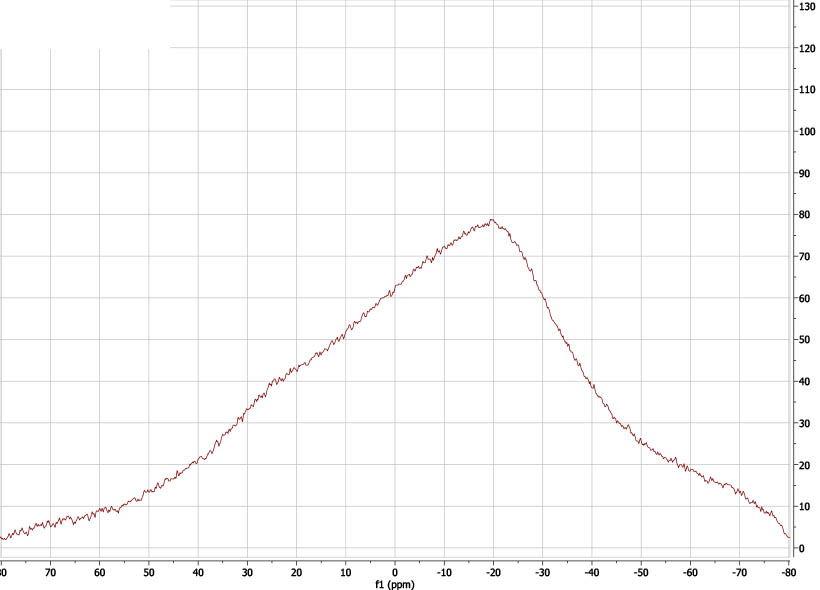
Background signal from a probe with regular glass insert. On Bruker 400 with SmartProbe, the spectrum, from -80 to +80 ppm, was collected without any sample in the probe, showing the background 11B signal from the glass insert lining in the probe. |
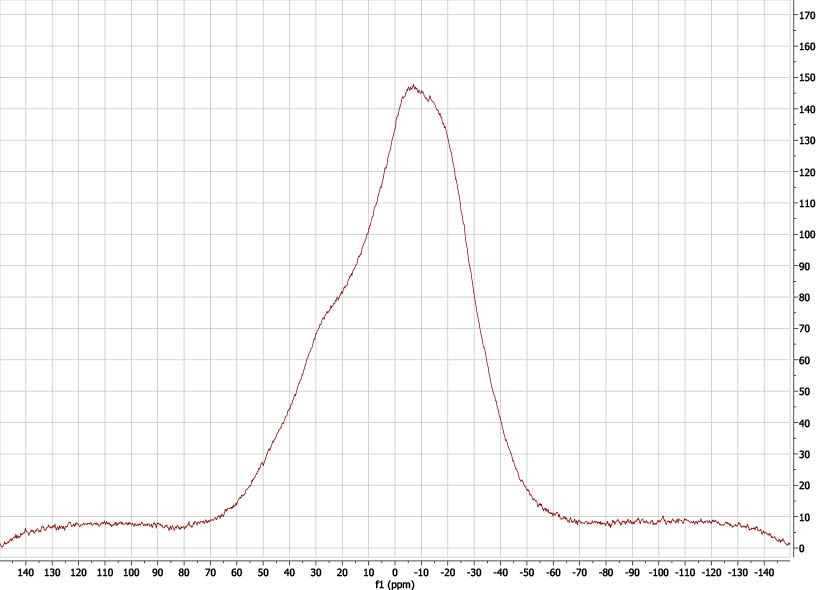
Bruker 400 with SmartProbe. The spectrum, from -150ppm to +150ppm, was collected with an empty regular NMR glass tube. The background contains both broad signals from the probe and the NMR tube covering -70 to +70 ppm. |
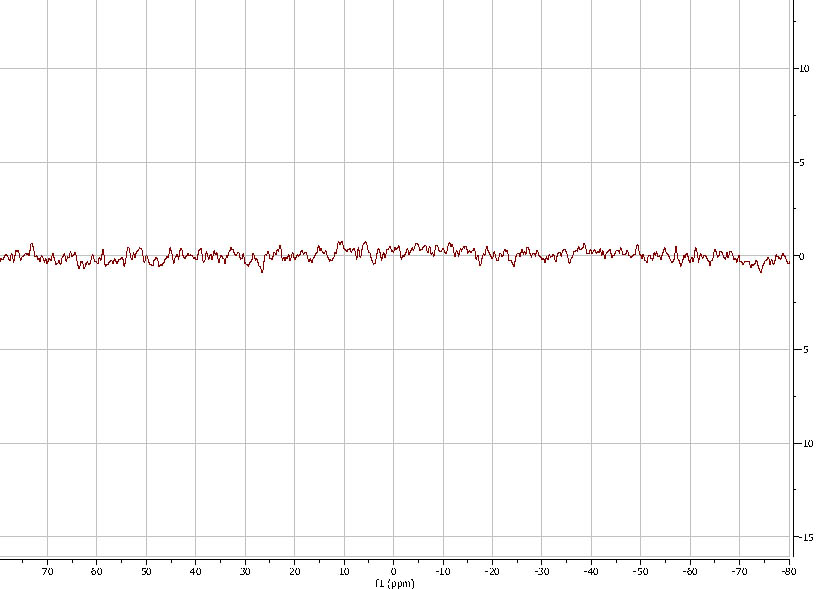
Agilent 400 with oneNMR probe. The spectrum, from -80 to +80 ppm, was collected without any sample in the probe. The NMR tube liner in the probe is made of quartz glass suitable for good quality boron NMR. |
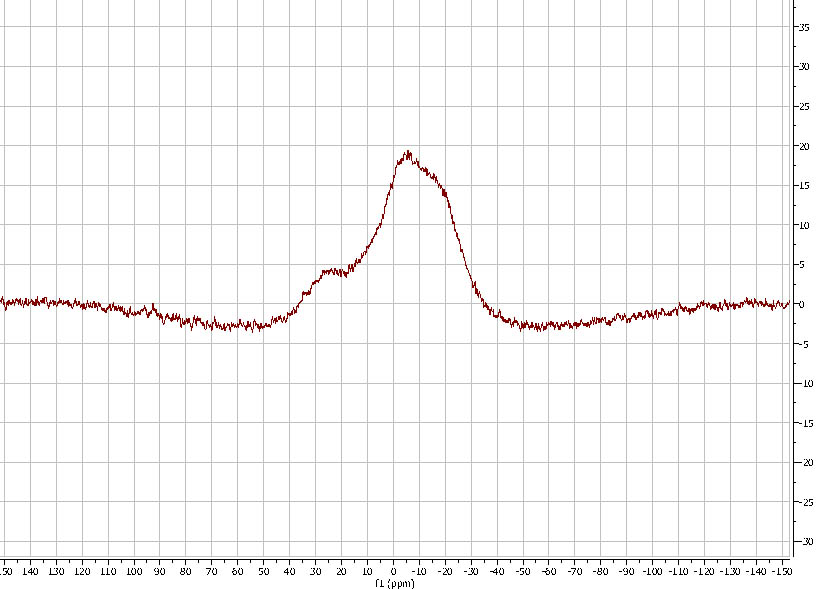
Background signal from regular NMR glass tube. On Agilent 400 with oneNMR probe, the spectrum, from -150 ppm to +150 ppm, was collected with an empty regular NMR glass tube. This spectrum is essentially the typical background contribution from a regular NMR glass tube to the 11B spectrum covering -50 to +50 ppm. |
While the broad background may not obscure sharp and strong 11B signals, it poses a serious problem to broad, weak signals from any compound. To avoid this issue, it is best to use a quartz NMR tube and collect the data with a probe with quart glass liner. The following is an example from work done for an external user.
11B NMR of Compound on Bruker 400 and Agilent 400
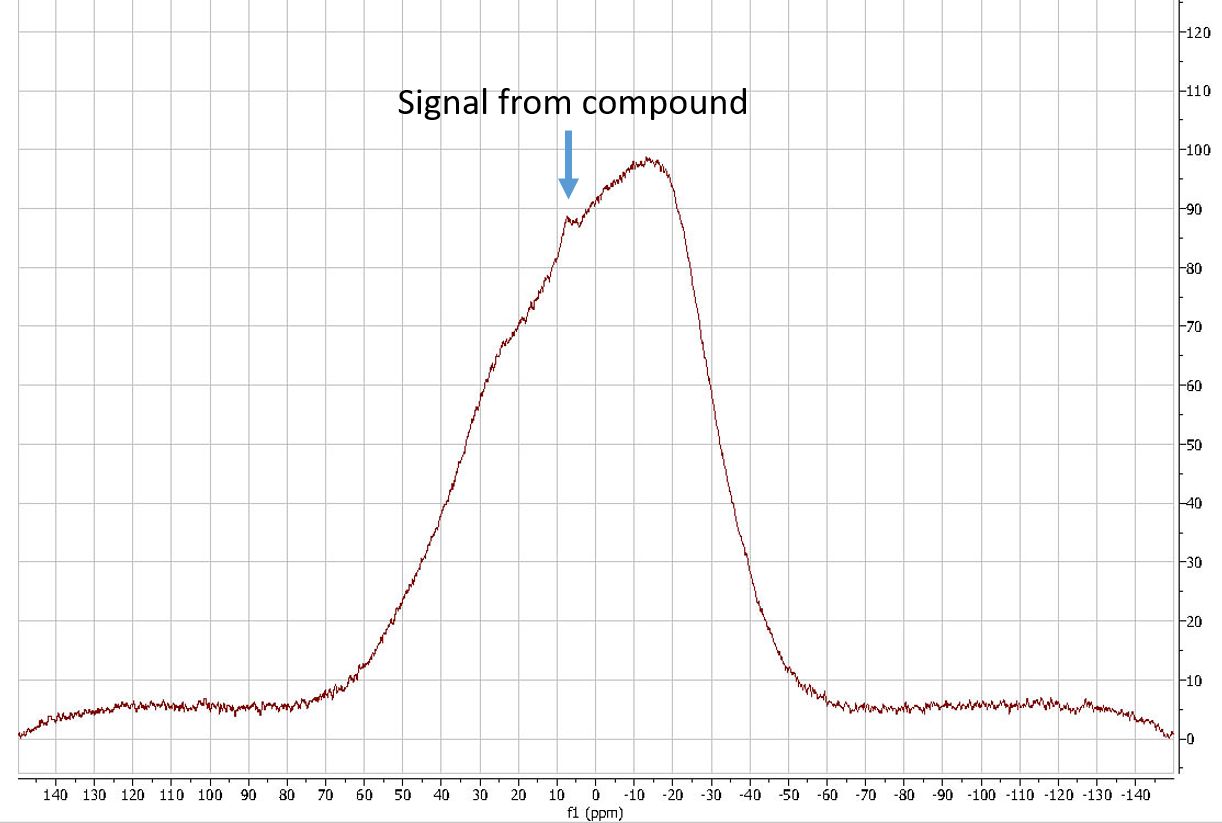
Bruker 400 with SmartProbe. A quartz tube was used, but the broad signals from the probe itself almost totally obscured the weak signal from the compound. In this case, a significant longer run may be needed to overrun the background and confirm the compound signal. If the compound peak is much broader, as found in several other samples, it would become nearly impossible to obtain useful data. |
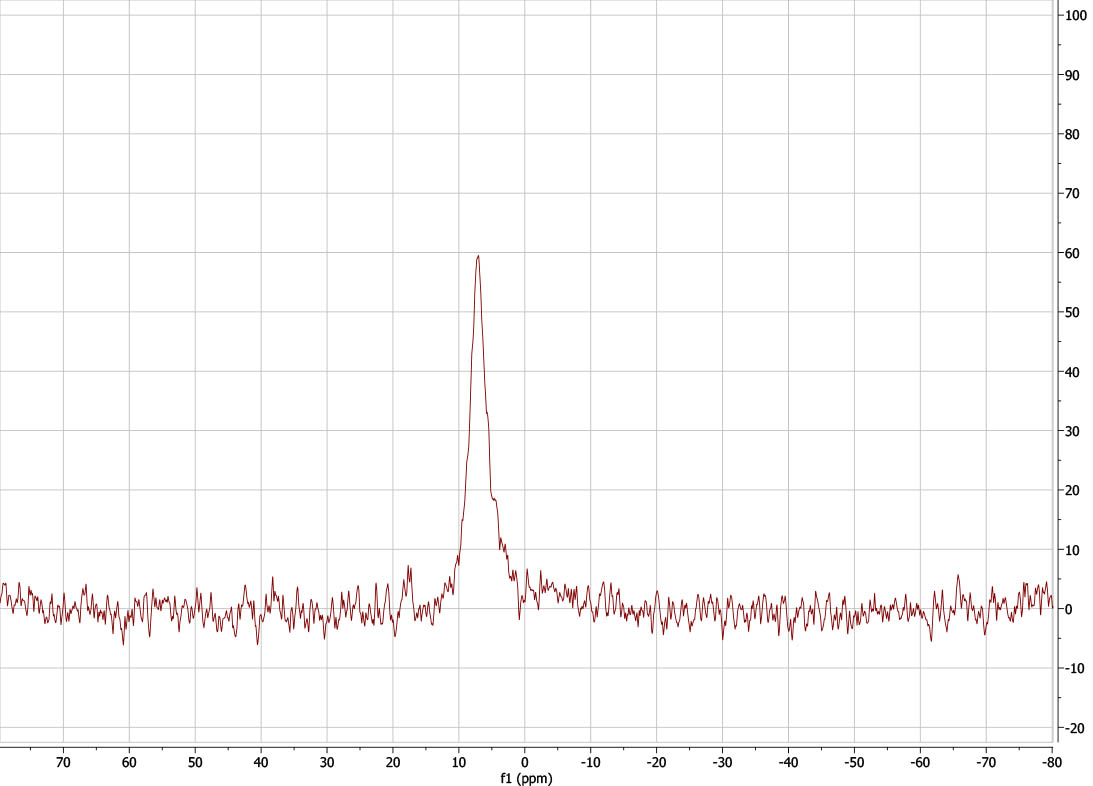
Agilent 400 with oneNMR probe. A quartz NMR tube along with the quartz glass liner in the probe revealed a clean 11B spectrum from the compound with a single broad signal around 7 ppm, with a linewidth of ~ 5 ppm (~ 650 Hz). |
Updated, 04/2021, H. Zhou

